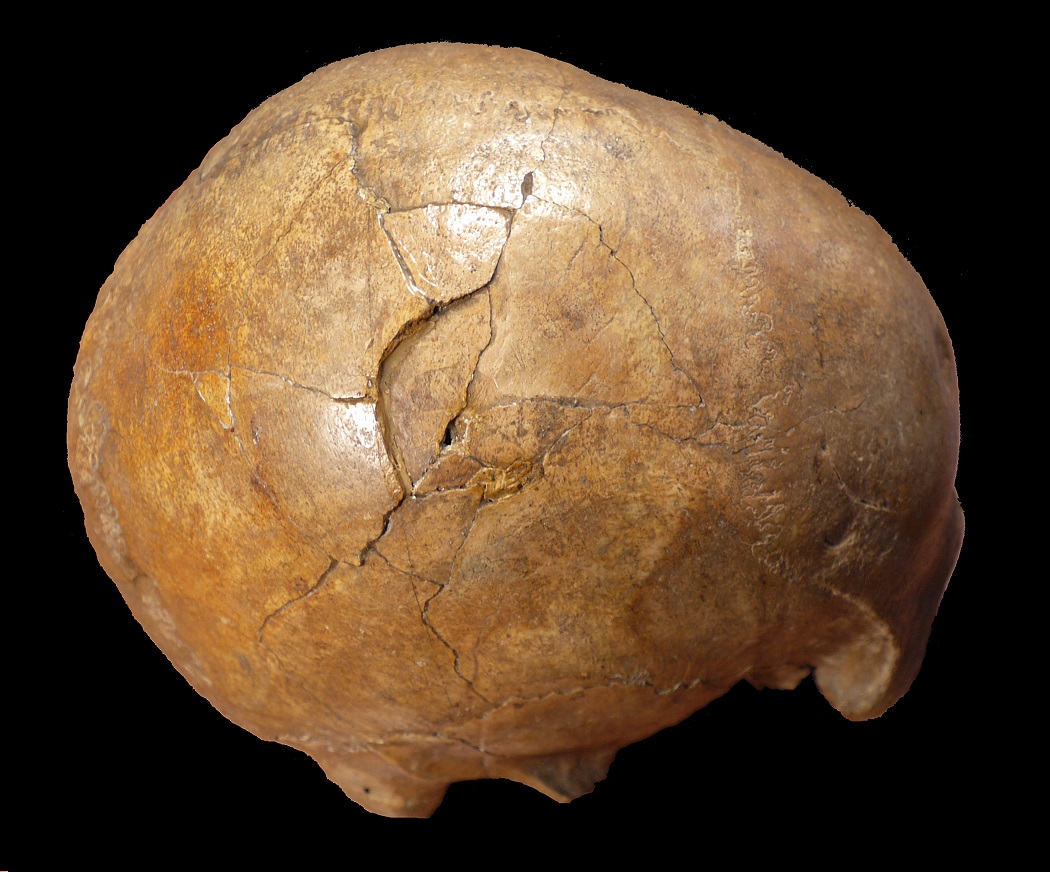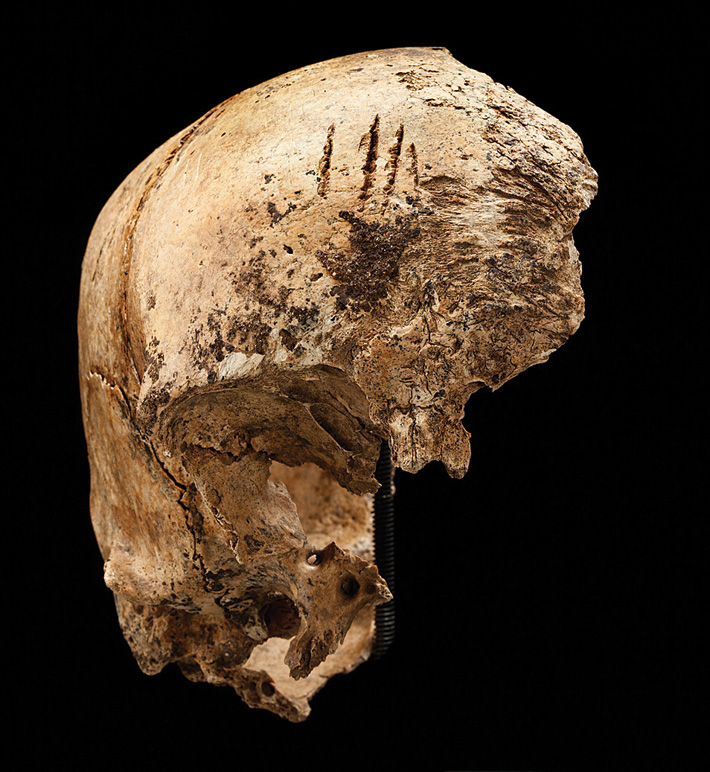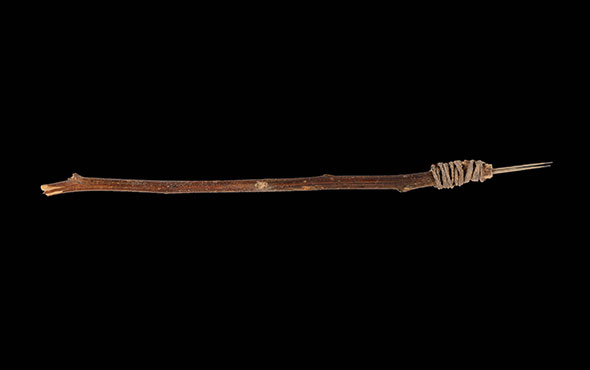
TÜBINGEN, GERMANY—Paleoanthropologist Katerina Harvati of the University of Tübingen and her colleagues determined that damage to a 33,000-year-old skull was inflicted with a bat-like object by a possibly left-handed attacker who struck two consecutive blows while facing the victim, according to a report from Live Science. “The extent of the injuries that he sustained would have led to death,” Harvati said. The skull, discovered in a cave in Romania in 1941 by phosphate miners, belonged to an adult man known as the Cioclovina individual. For the study, Harvati and her colleagues took a CT scan of the skull, and then used synthetic models to try to re-create its injuries. The team members dropped the model skulls to simulate falls, hit them with rocks, and clubbed them with bats. The prehistoric wounds on the skull closely matched the modern wounds created with blunt-force trauma, Harvati explained. “Our results clearly showed that the fracture patterns observed on this skull could not have been produced after death, or from an accidental fall,” she said. For more on evidence of violence in the archaeological record, go to “Culture Clash.”











